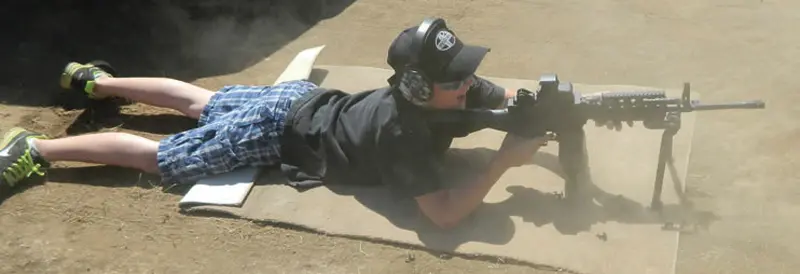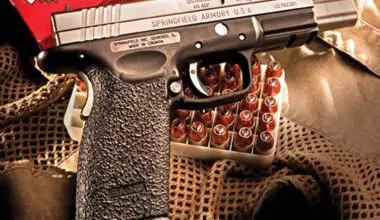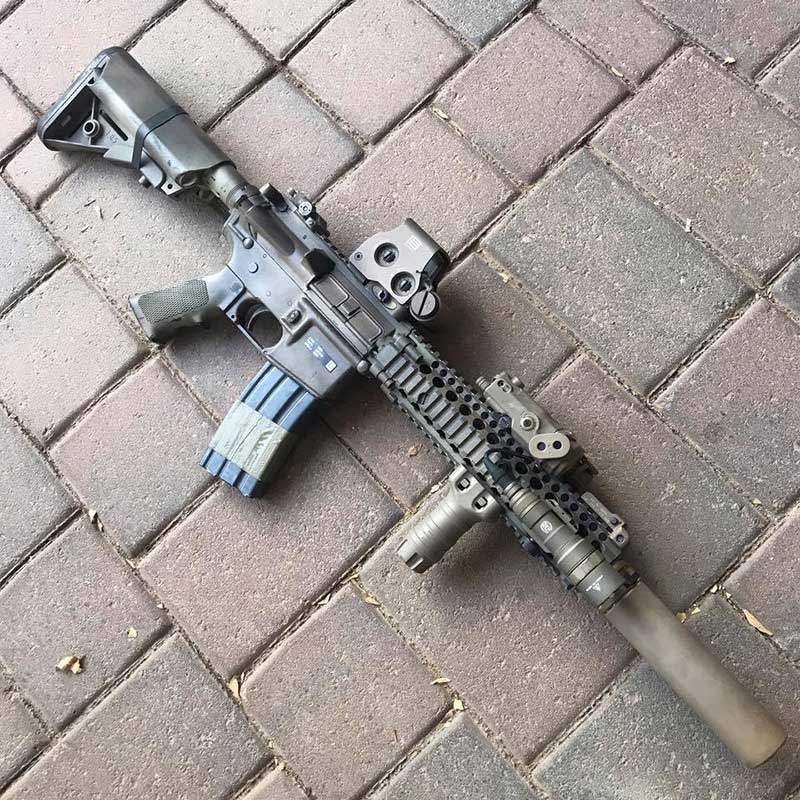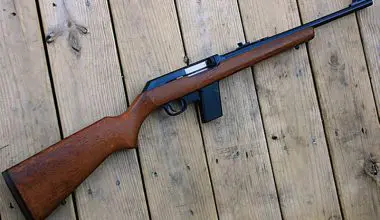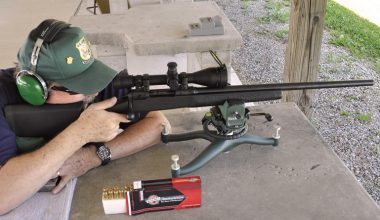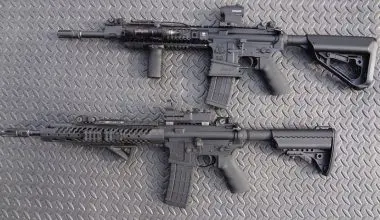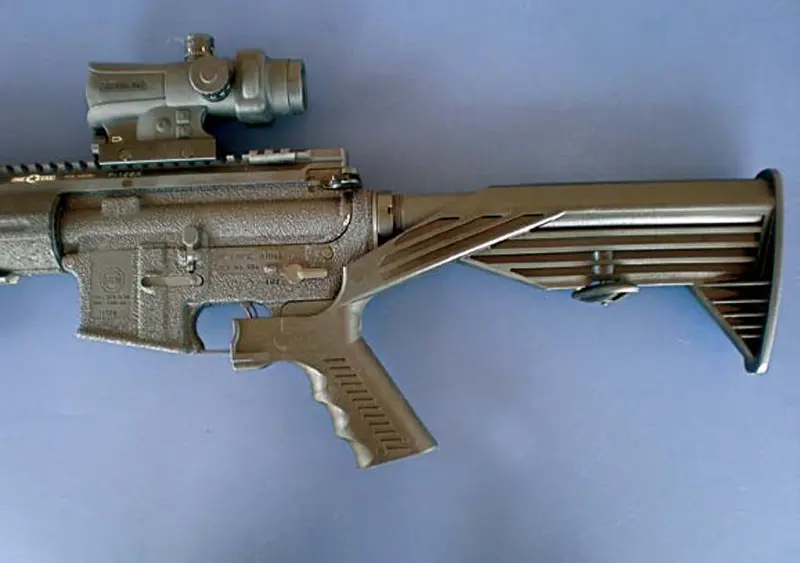
Nicknamed the Smile Stock because of the smile most folks have on their face after using it, the SSAR-15 uses the “bump fire” technique to fire rounds in rapid succession. A sample stock was acquired for more in-depth testing; the results are presented here.
Table of Contents
BUMP FIRE
In simple terms, bump fire uses a semiautomatic firearm’s own recoil to fire multiple shots. The trigger finger is placed on the trigger with no rearward pressure applied on the gun. The firearm is pushed forward to trip the trigger. As the gun recoils to the rear, the trigger is reset and the gun fires once more, and will continue to fire until either forward pressure is released or the finger removed from the trigger. For the majority of folks, without a lot of practice and the expenditure of copious amounts of ammunition, bump firing is notoriously inaccurate. While bump firing can be achieved from the shoulder, it is normally done from the hip—yet another way to create harmless holes in the atmosphere that immediately fill themselves back in….
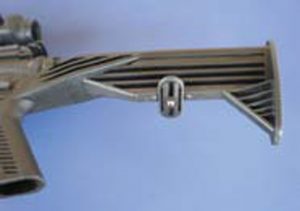
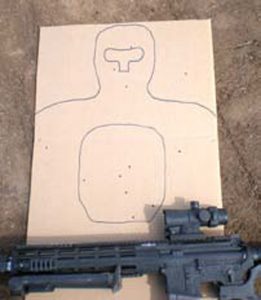
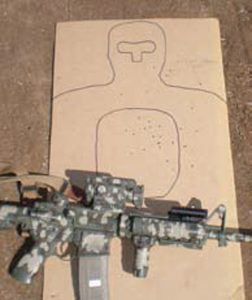
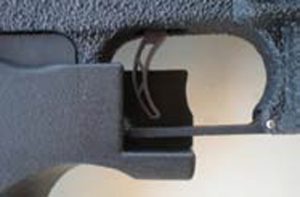
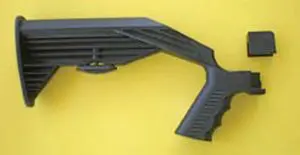
SSAR-15
The SSAR-15 requires the use of an upper receiver extension (often incorrectly called a buffer tube) for a collapsible stock. Either a milspec or commercial size extension can be used, though Slide Fire recommends the milspec size.
[Note: If an aftermarket sling attachment is used on the upper receiver extension, for example Magpul’s Ambidextrous Sling Attachment Point or the TangoDown PR-4 Mount, the SSAR-15 will not function properly. This is also true if the rifle/carbine has an enlarged trigger guard. There is no provision for attaching a sling to the SSAR-15.]
The standard pistol grip is removed and replaced with what Slide Fire calls an Interface Block. The selector spring, detent and screw for the pistol are replaced within the Interface Block. With the Interface Block installed, slide the SSAR-15 stock onto the upper receiver extension. Total installation time: five minutes.
What sets the Slide Fire Solutions SSAR-15 stock apart from other methods of bump firing is that rearward pressure is applied as well as forward pressure. With a locking device on the stock that Slide Fire calls a Lock Pin Modifier (LPM) positioned at right angles to the stock, the SSAR-15 is locked into one of the holes on the receiver extension tube. Set in this position, the gun will function in normal semi-auto fashion, including being able to reset the trigger.
When the LPM is positioned parallel to the stock, the SSAR can travel back and forth. To bump fire, the trigger finger is placed on a built-in finger rest on the stock. The stock is pulled into the shoulder while pushing forward on the forearm.
Each SSAR-15 comes with a copy of a letter from the BATF stating that the unit has been ruled as a firearm part and is not regulated under the Gun Control or National Firearms Act.
PUTTING IT ALL TOGETHER
We installed the Slide Fire kit on an Olympic Arms lower fitted with a Patriot Ordnance Factory (POF) upper. The POF upper has a 14.5” barrel with a permanently attached flash hider to bring it to the legal minimum 16” barrel length. The upper was also fitted with a TangoDown Advanced Combat Bipod.
For optics, we installed a Lucid HD7 that was acquired at the 2011 SHOT Show. The body of the HD7 is made of aluminum and is entirely rubber armored. It has a built-in option of four red illuminated reticle styles: a dot, cross hairs, a circle with cross hairs and a small dot within a circle. The unit will run 1,000 hours on a single AA battery with an automatic shutdown after the sight is left on for two hours. The HD7 sight has an autobrightness feature that will dim the reticle in low light and increase the brightness in bright light, such as when outdoor in full sunlight. The 1/2 MOA adjustments click positively when adjusted.
AIMED VS. “AUTOMATIC” FIRE
To evaluate the SSAR-15, we decided to use an SLR-15 carbine as a control firearm to gauge the accuracy and effectiveness of aimed semi-auto fire against aimed “automatic” (bump) fire.
The Lucid HD7 was properly zeroed and the zero of the Aimpoint Comp M4 on the SLR-15 was confirmed before firing. Ammunition used was Black Hills 55-grain FMJ.
When a gun is fired at the cyclic rate and a round is left in the chamber, there is a chance of having a “cook off.” This occurs when the barrel/chamber is so hot that the chambered round reaches a temperature that it will fire. The sample gun in Texas had close to 400 rounds fired through it almost as fast as magazines could be inserted, and it fired with no problems. Although we were not going to be expending that much ammo that quickly, to be on the safe side during the evaluation, no round was left in the chamber of the carbine fitted with the SSAR-15 when not firing, and strict muzzle awareness was observed.
Cardboard silhouette targets were set up at 75 yards. Shooting was conducted from standing, kneeling and prone, with the TangoDown bipod utilized on the Slide Fire-equipped carbine. Ten rounds were fired from each position with each carbine (three three-round bursts with the Slide Fire gun with a single shot), with four runs with each. An arbitrary time limit of ten seconds per string was established for a baseline.
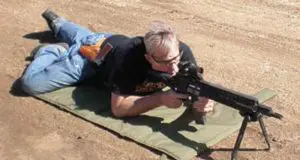
Any shot within the silhouette was counted as a hit. Shots that hit the 18”x30” target but were outside of the silhouette were, obviously, considered misses.
Hits on target fired semiautomatically with the SLR-15 ranged from 90 (27 hits) to 100%. Hits on target with the Olympic/ POF Slide Fire carbine ranged from 36.7 (11 hits) to 50% (15 hits).
SUMMARY
Regardless of “good intentions,” a shooter is both legally and morally responsible for each and every round launched downrange. With that said, based on our test results, the Slide Fire has no practical/tactical application for a couple of reasons.
First is the manual of arms. While the device can be pulled back into the shoulder, the forend must be pushed forward to fire, which is counter-intuitive to existing skill sets.
The second reason is gaining proficiency with the device. Can it be done? Most certainly, but it may take a thousand rounds to get proficient and again, one would be compromising existing skill sets while doing so.
In all fairness, while we at S.W.A.T. have a tendency to look at the tactical applications of products, Slide Fire Solutions has never claimed that the SSAR-15 stock has any practical uses—only that it’s a lot of fun to shoot.
And it is fun. After firing an SSAR-15- equipped gun, there were big smiles on the faces of shooters who ran the gamut from a ten-year-old boy to a man in his mid-50s.
At the price of $369.00 per unit, is it worth buying one simply for fun? That decision is yours, but we can report that three members of the S.W.A.T. staff have already purchased the device out of their own pockets.
To see the Slide Fire Solutions SSAR- 15 in action, check out the video on the S.W.A.T. Magazine Facebook page.
